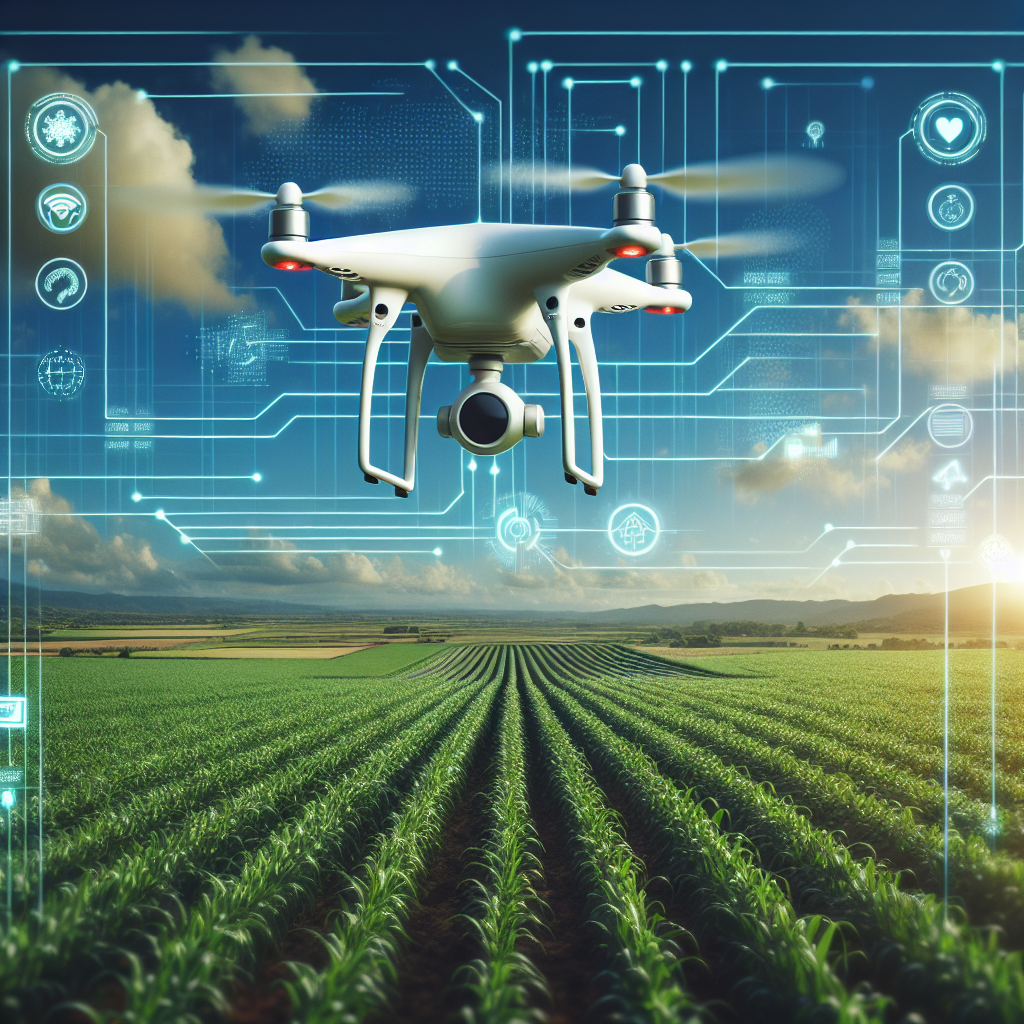Agriculture is one of the oldest and most essential industries in the world, responsible for providing food, fuel, and fiber for billions of people. With the global population expected to reach 9.7 billion by 2050, the demand for agricultural products is only going to increase. To meet this growing demand, farmers are turning to technology, specifically artificial intelligence (AI), to enhance agricultural productivity.
AI has the potential to revolutionize the way we grow, harvest, and distribute food. By using AI-powered tools, farmers can optimize crop yields, reduce waste, and improve overall efficiency. From automated tractors to drones that monitor crop health, AI is transforming the agricultural landscape in ways we never thought possible.
One of the key ways AI is enhancing agricultural productivity is through precision farming. Precision farming uses AI algorithms to analyze data collected from sensors, satellites, and drones to make informed decisions about crop management. By using AI, farmers can improve seed selection, optimize fertilizer use, and monitor crop health in real-time. This results in higher yields, lower costs, and reduced environmental impact.
Another way AI is enhancing agricultural productivity is through predictive analytics. By analyzing historical data on weather patterns, soil health, and crop performance, AI can predict future trends and help farmers make better decisions about planting, irrigation, and harvesting. This allows farmers to adapt to changing conditions and maximize their productivity.
AI is also being used to automate routine tasks on the farm, such as planting, weeding, and harvesting. By using AI-powered robots and drones, farmers can reduce labor costs, increase efficiency, and improve overall productivity. This frees up farmers to focus on more strategic tasks, such as crop management and marketing.
In addition to enhancing productivity, AI is also helping farmers reduce waste and improve sustainability. By using AI to monitor crop health and predict pest outbreaks, farmers can reduce the need for harmful pesticides and chemicals. This not only benefits the environment but also improves the quality of the food we eat.
Despite the many benefits of AI in agriculture, there are some challenges that farmers must overcome. One of the biggest challenges is access to technology. Many small-scale farmers in developing countries lack the resources to invest in AI-powered tools. Governments and organizations must work together to provide training and support to help farmers adopt AI technology.
Another challenge is data privacy and security. As farmers collect more data on their crops and operations, there is a risk of this information being hacked or misused. Farmers must ensure that they have robust cybersecurity measures in place to protect their data and ensure the privacy of their operations.
Overall, the potential of AI in agriculture is vast. By harnessing the power of AI, farmers can increase productivity, reduce waste, and improve sustainability. As the world’s population continues to grow, AI will play an increasingly important role in feeding the world.
FAQs:
Q: How can AI help farmers increase crop yields?
A: AI can help farmers increase crop yields by analyzing data on soil health, weather patterns, and crop performance to make informed decisions about planting, irrigation, and harvesting. By using AI-powered tools, farmers can optimize crop management practices to maximize yields.
Q: What are some examples of AI-powered tools used in agriculture?
A: Some examples of AI-powered tools used in agriculture include drones that monitor crop health, robots that automate planting and harvesting, and sensors that collect data on soil moisture and nutrient levels. These tools help farmers make more informed decisions and improve overall productivity.
Q: How can small-scale farmers in developing countries benefit from AI technology?
A: Small-scale farmers in developing countries can benefit from AI technology by gaining access to tools that help them optimize crop management practices, reduce waste, and improve overall productivity. Governments and organizations can provide training and support to help farmers adopt AI technology.
Q: What are some of the challenges of using AI in agriculture?
A: Some of the challenges of using AI in agriculture include access to technology, data privacy and security, and the cost of implementation. Farmers must overcome these challenges to fully harness the potential of AI in improving agricultural productivity.
Q: How can farmers ensure the privacy and security of their data when using AI technology?
A: Farmers can ensure the privacy and security of their data when using AI technology by implementing robust cybersecurity measures, such as encryption, firewalls, and secure data storage. Farmers should also be vigilant about who has access to their data and how it is being used.

